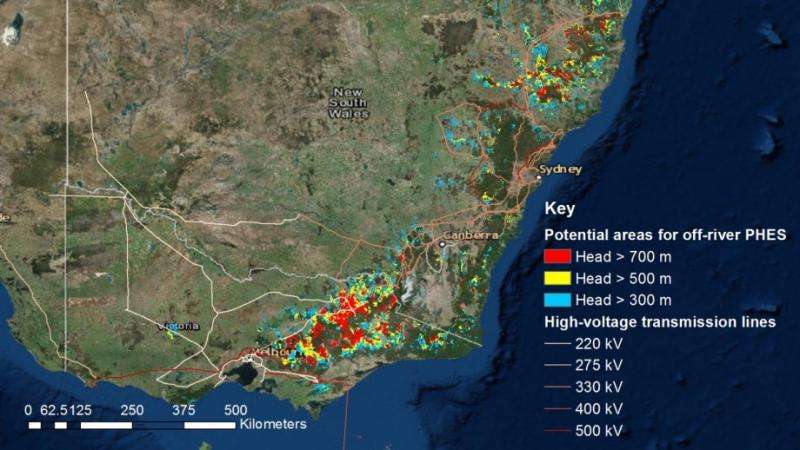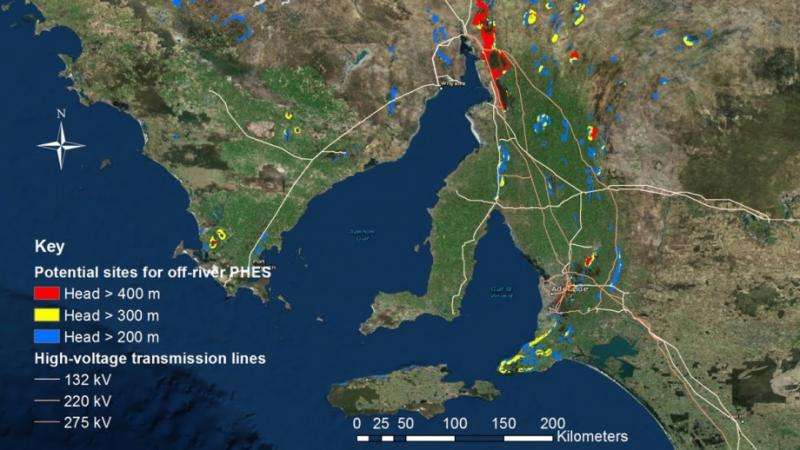Hydro storage can secure 100 percent renewable electricity

Pumped hydro storage can be used to help build a secure and cheap Australian electricity grid with 100 per cent renewable energy, a new study from The Australian National University (ANU) has found.
Lead researcher Professor Andrew Blakers from ANU said the zero-emissions grid would mainly rely on wind and solar photovoltaic (PV) technology, with support from pumped hydro storage, and would eliminate Australia's need for coal and gas-fired power.
"With Australia wrestling with how to secure its energy supply, we've found we can make the switch to affordable and reliable clean power," said Professor Blakers from the ANU Research School of Engineering.
Professor Blakers said wind and solar PV electricity provided nearly all new generation capacity in Australia and half the world's new generation capacity each year. At present, renewable energy accounts for around 15 per cent of Australia's electricity generation while two thirds comes from coal-fired power stations.
"However, most existing coal and gas stations will retire over the next 15 years, and it will be cheaper to replace them with wind and solar PV," he said.
The ANU research considers the potential benefits of using hydro power energy storage, where water is pumped uphill and stored to generate electricity on demand.
"Pumped hydro energy storage is 97 per cent of all storage worldwide, and can be used to support high levels of solar PV and wind," Professor Blakers said.

Professor Blakers said the cost of a 100 per cent stabilised renewable electricity system would be around AU$75/MWh, which is cheaper than coal and gas-fuelled power.
ANU is leading a study to map potential short-term off-river pumped hydro energy storage (STORES) sites that could support a much greater share of renewable energy in the grid.
STORES sites are pairs of reservoirs, typically 10 hectares each, which are separated by an altitude difference of between 300 and 900 metres, in hilly terrain, and joined by a pipe with a pump and turbine. Water is circulated between the upper and lower reservoirs in a closed loop to store and generate power.
Dr Matthew Stocks from the ANU Research School of Engineering said STORES needed much less water than power generated by fossil fuels and had minimal impact on the environment because water was recycled between the small reservoirs.
"This hydro power doesn't need a river and can go from zero to full power in minutes, providing an effective method to stabilise the grid," he said.
"The water is pumped up from the low reservoir to the high reservoir when the sun shines and wind blows and electricity is abundant, and then the water can run down through the turbine at night and when electricity is expensive."
Co-researcher Mr Bin Lu said Australia had hundreds of potential sites for STORES in the extensive hills and mountains close to population centres from North Queensland down the east coast to South Australia and Tasmania.
More information: 100% renewable electricity in Australia: energy.anu.edu.au/files/100%25%20renewable%20electricity%20in%20Australia.pdf
Provided by Australian National University



















